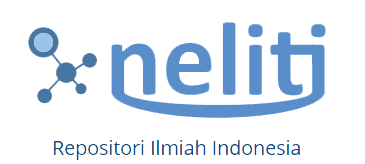ANALISIS PIUTANG TAK TERTAGIH TERHADAP TINGKAT PERPUTARAN PIUTANG PADA CV SURYAMAS DI KABUPATEN OKU
DOI:
https://doi.org/10.35908/jeg.v6i2.1389Abstract
This study is entitled Analysis of Uncollectible Accounts Receivable Turnover Rate at CV Suryamas in OKU Regency, with the formulation of the problem is how to analyze uncollectible accounts on the turnover rate of accounts receivable at CV Suryamas in OKU Regency. The method used in this research is descriptive method. This method is used by means of research prioritizing systematic observation of existing activities to obtain appropriate and targeted results by using the analysis tools for the bad debts ratio and the accounts receivable turnover ratio. The results showed that the risk of uncollectible receivables from CV Suryamas in 2015-2019 was 0.11%. While CV Suryamas' receivables turnover in 2015-2019 was seen from the average collection ratio of 121.78%. When viewed, the ratio of non-performing receivables is 0.11%, which means that there is less risk of uncollectible receivables and the average collection ratio reaches 100%. Based on the analysis of the uncollectible accounts receivable ratio to the CV Suryamas receivable turnover ratio in OKU Regency during 2015-2019, it shows that the management of uncollectible accounts has been strived to run properly. This can be seen from the ratio of arrears whose value is less than 3% and the collection ratio reaching 100%, although the receivable turnover ratio has an impact on the inefficient use of business capital and the average collection period ratio also estimates bad debts at 60%.References
Arikunto. 2013. Prosedur Penelitian Suatu Pendekatan Praktis. Rineka Cipta. Jakarta.
Baridwan, Zaki. 2004. Intermediate Accounting “Pengantar Akuntansiâ€. Salemba Empat. Jakarta.
Hasibuan, Malayu S.P., 2011. Manajemen Perusahaan. Bumi Aksara. Jakarta.
Hery. 2013. Auditing (Pemeriksaan Akuntansi I), Cetakan Pertama. CAPS Publishing. Jakarta.
Horne dan Wachowicz JR (alih bahasa oleh Mubarokah). 2017. Prinsip-Prinsip Manajemen Keuangan. Salemba Empat. Jakarta.
Ikatan Akuntan Indonesia. 2007. Standar Akuntansi Keuangan. Salemba Empat. Jakarta.
Kasmir. 2012. Analisis Laporan Keuangan. PT. Raja Grafindo Persada. Jakarta.
Keown, Arthur J. 2008. Manajemen Keuangan. PT Macanan Jaya Cemerlang.
Jakarta.
Kieso, Donald E. 2012. Intermediate Accounting. John Wiley & Sons. United States of America.
Lubis, Rahmad Hidayat. 2017. Pengantar Akuntansi 2 Perusahaan Dagang. Citra Aditya Bakti. Jakarta.
Mulyadi. 2016. Sistem Informasi Akuntansi. Salemba Empat. Jakarta.
Munawir. 2012. Analisa Laporan Keuangan. Liberty. Yogyakarta.
Rivai. 2015. Manajemen Perusahaan. PT Raja Grafindo. Jakarta.
Riyanto, Bambang. 2008. Dasar-Dasar Manajemen Keuangan. Salemba Empat.
Jakarta.
Robbins, P.Stephen dan Timothy A. Judge. 2012. Perilaku Organisasi. Salemba. Jakarta.
Sartono, Agus, R. 2011. Manajemen Keuangan (Teori dan Aplikasi). BPFE- Yogyakarta.
Skousen. 2004. Akuntansi Keuangan Menengah. Terjemahan PT Dian Mas Cemerlang, Salemba Empat. Jakarta.
Soemarso. 2005. Akuntansi Suatu Pengantar. Salemba Empat. Jakarta.
Sudana. 2011. Manajemen Keuangan Perusahaan. Erlangga. Jakarta.
Sugiyono. 2010. Statistik Teori dan Aplikasi. PT Gelora Aksara Pratama. Jakarta.
Syamsuddin, Lukman. 2013. Manajemen Keuangan Perusahaan. PT Raja Grafindo. Jakarta.
Weygandt and Teery D. Warfield. 2011. Intermediate. Accounting, Erlangga. Jakarta.
Downloads
Published
How to Cite
Issue
Section
License
Authors who publish with this journal agree to the following terms:
- Authors retain copyright and grant the journal right of first publication with the work simultaneously licensed under a Creative Commons Attribution License   that allows others to share the work with an acknowledgement of the work's authorship and initial publication in this journal.
- Authors are able to enter into separate, additional contractual arrangements for the non-exclusive distribution of the journal's published version of the work (e.g., post it to an institutional repository or publish it in a book), with an acknowledgement of its initial publication in this journal.
- Authors are permitted and encouraged to post their work online (e.g., in institutional repositories or on their website) prior to and during the submission process, as it can lead to productive exchanges, as well as earlier and greater citation of published work










